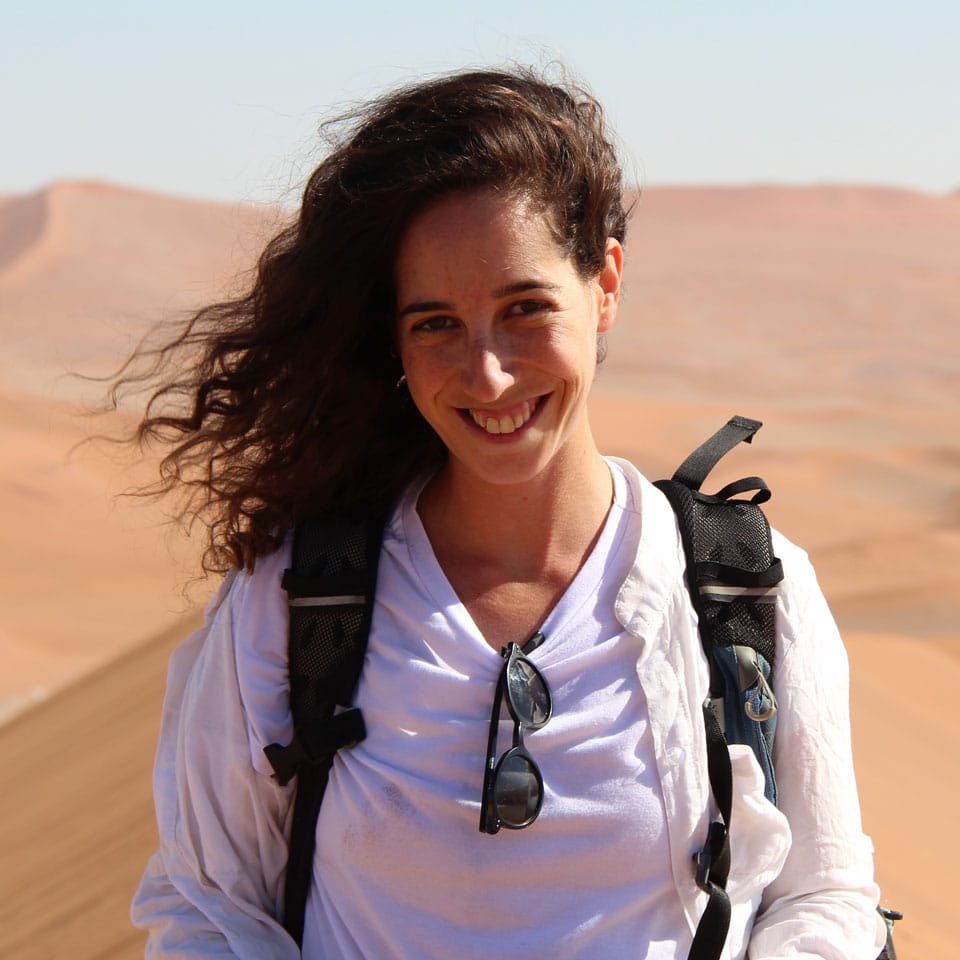Dr. Daphna Uni is a Vaadia- BARD Post Doctoral Fellow at The University of Arizona, hosted by Dr. William K. Smith. In The School of Natural Resources and Environment.
What is the focus of your postdoc work?
“In my postdoc, I am integrating trees ecophysiology with hyperspectral remote sensing tools to unravel water and carbon fluxes in larger space and time resolutions. Specifically, I am measuring water-use patterns, and carbon sequestration dynamics in arid environments, from the tree scale (sap flow) to a greater forest scale (flux towers) and up to the ecosystem scale (remote sensing from space). These three-layer observations enable validation of the tree and forest scales, before we will be able to map global patterns on a massive scale.”
What got you interested in tree ecophysiology and remote sensing tools?
“It was during my Ph.D. that I studied tree ecophysiology in hyper arid ecosystems. I followed their photosynthesis and water-use by intensive filed work in the Arava desert in Israel. I ended up discovering some surprising trends in their ability to photosynthesize under extreme conditions. There, I realized that water and carbon are exchanged in terrestrial ecosystems constantly, but our ability to observe this process is limited to where flux towers and field measurements sites are located.
So, I decided to take it up many scales, to continue my research and apply my knowledge in tree ecophysiology in water-limited ecosystems to wider areas. Therefore, I reached the Earth Dynamic Observatory lab, led by Prof. William Kolby Smith, where we use hyperspectral remote sensing combined with validated trees ecophysiology in arid sites. So now, we will not be limited to learn about water and carbon dynamics only in field-sites and with local measurement, but using remote sensing on an unprecedented scale, anywhere in the globe.”
What are your plans once you complete your postdoctoral work?
“I hope that the new set of tools we are working on developing will improve our ability to follow plants
physiological dynamics from space, and with this ability we can improve climate models, and monitor carbon sequestration in arid lands, which are usually omitted from these models. And we can detect stress response of forests and crops from far away.”
What tip would you give someone just beginning a career in agricultural research?
“Do not be afraid to make changes in your field of research. Be flexible. For example, I started my research track by studying geography and focusing on dust storms and their interaction with forests. This led me to become extremely interested in trees themselves, which later developed into interest in remote sensing and understanding the vast scope of research it enables. Each one of these shifts provided me with better insight regarding research.”

